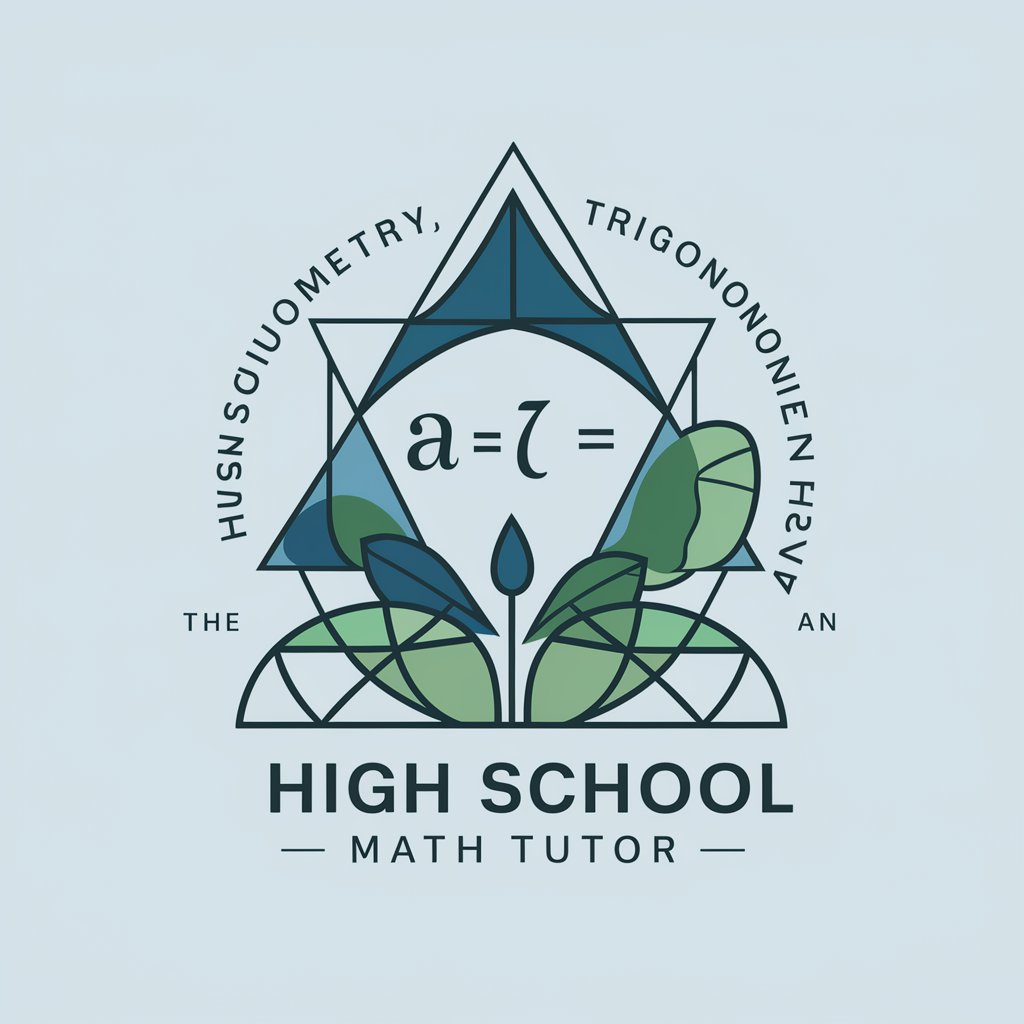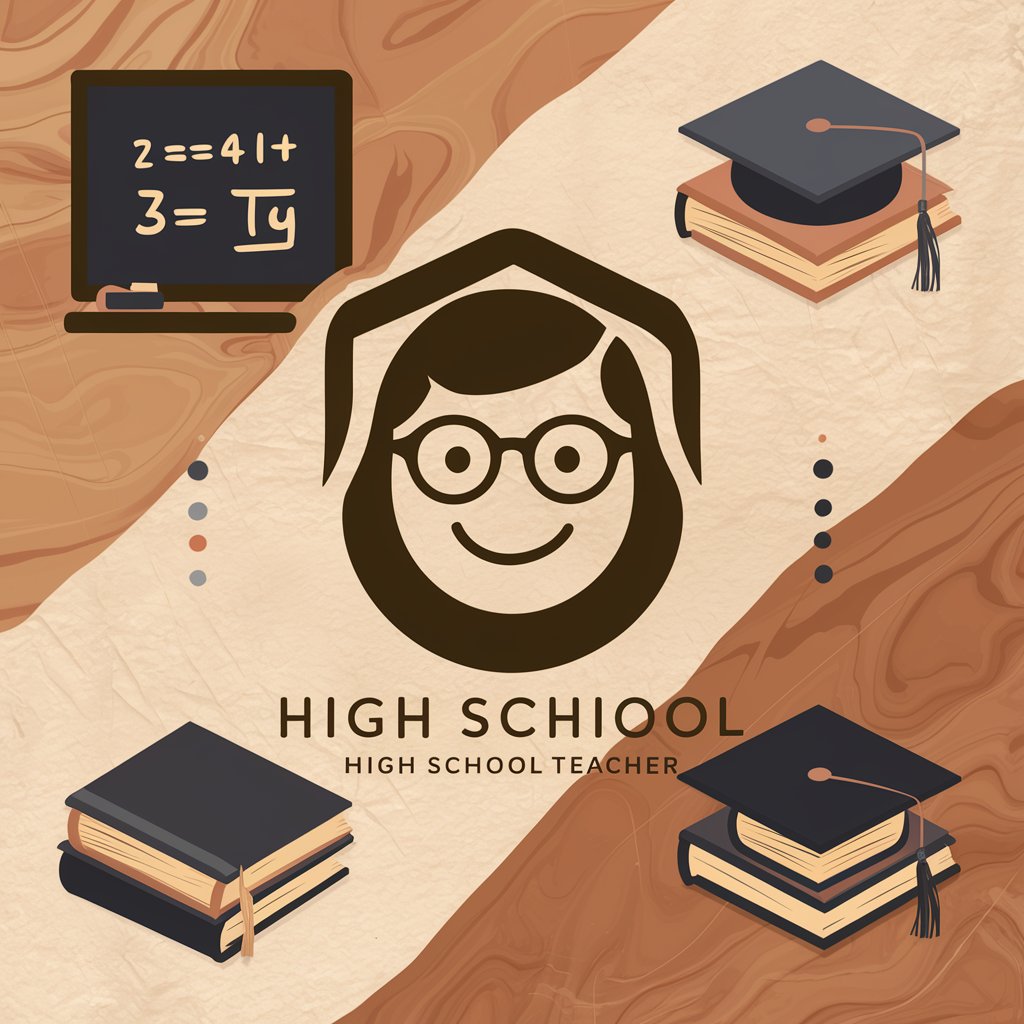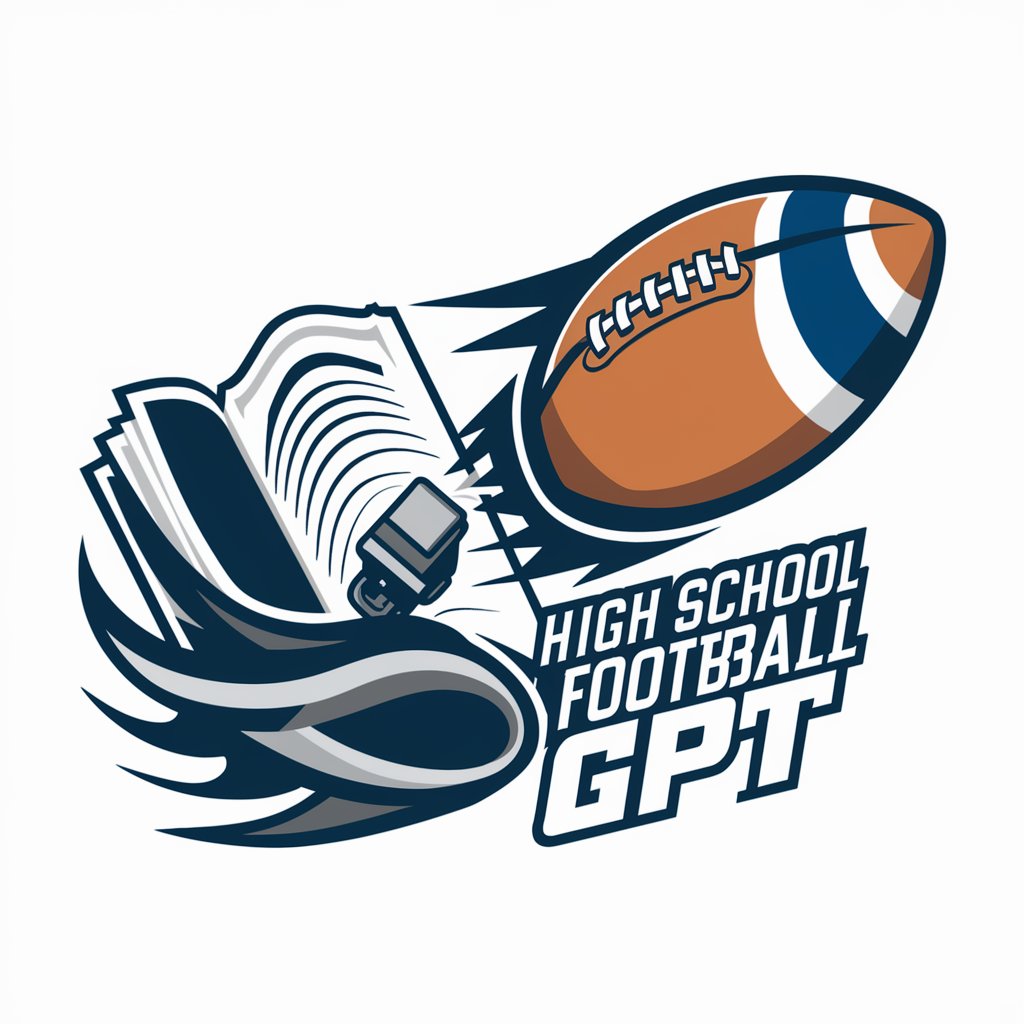
High school - Academic Assistance for Students
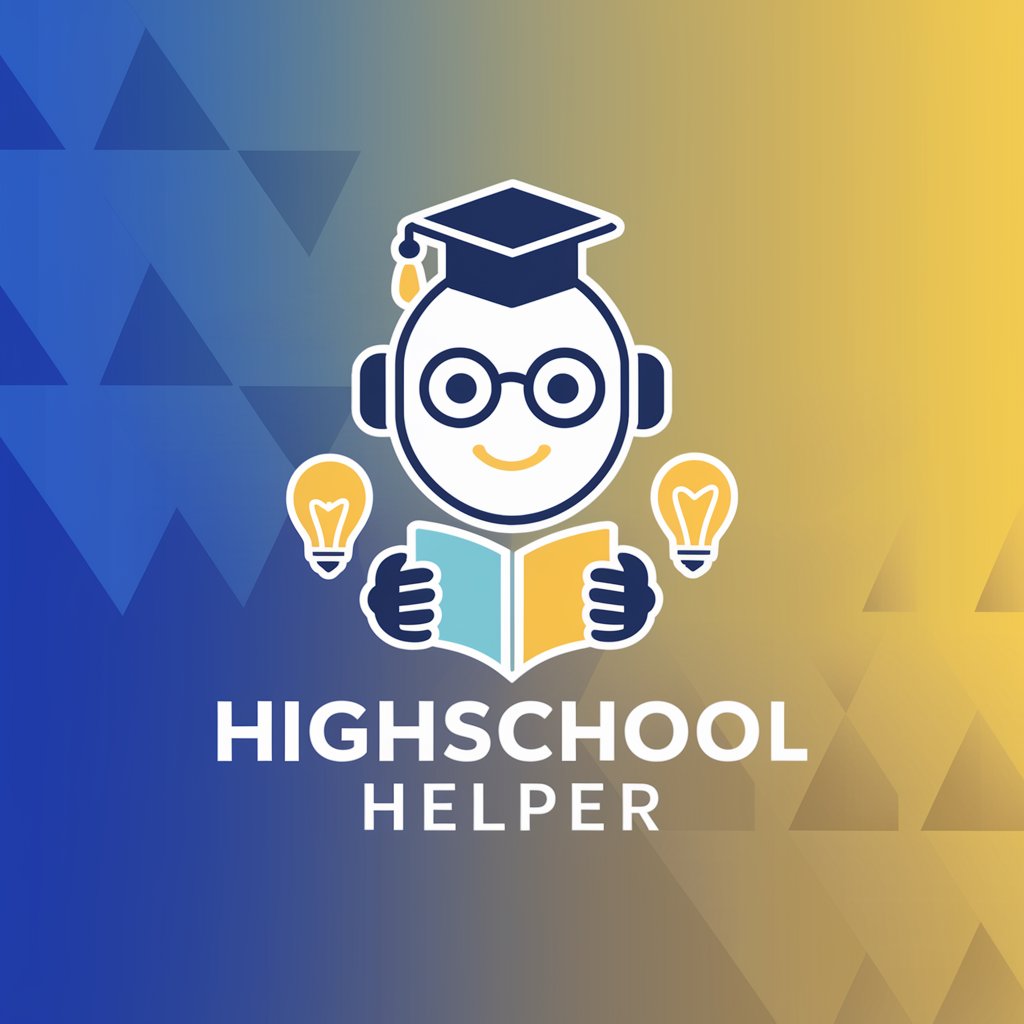
Hi there! How can I assist you with your studies today?
Empowering students with AI-powered educational support
Can you explain the concept of...
I need help solving this math problem...
What are some effective study tips for...
How do I write a strong essay on...
Get Embed Code
Understanding High School: A Comprehensive Overview
High school, as an educational stage, serves as a critical bridge between primary education and higher education or the workforce. It encompasses grades 9 through 12 in the United States, typically covering students aged 14 to 18. The fundamental purpose of high school is to provide students with a comprehensive education that includes a broad range of academic subjects such as Mathematics, English, Science, and Social Studies, alongside elective courses that cater to students' interests and career aspirations. High schools are designed to foster critical thinking, problem-solving skills, and social development through a combination of classroom learning, extracurricular activities, and community involvement. For example, a high school might offer advanced placement (AP) courses for college credit, clubs and sports for personal growth, and volunteer opportunities for civic engagement, all aimed at preparing students for the complexities of adult life and citizenship. Powered by ChatGPT-4o。

Core Functions of High School Education
Academic Development
Example
Offering a variety of courses in core subjects and electives.
Scenario
A student interested in engineering might take advanced courses in mathematics and science, along with electives in computer programming and robotics, to build a strong foundation for college-level engineering courses.
Social and Emotional Growth
Example
Facilitating clubs, sports teams, and social events.
Scenario
Joining the debate team or the school band allows students to develop communication skills, teamwork, and emotional intelligence through interactions with peers and performances in various settings.
Career and College Preparation
Example
Offering career counseling services and college preparatory programs.
Scenario
Career counseling sessions and college fairs provide students with the information and resources to make informed decisions about their post-high school paths, whether that means applying to colleges, entering trade schools, or joining the workforce.
Civic Engagement and Responsibility
Example
Integrating community service projects and civics education into the curriculum.
Scenario
A school might require students to complete a certain number of community service hours to graduate, teaching them the value of civic responsibility and the impact of volunteerism on community welfare.
Who Benefits from High School Services
Students
High school students are the primary beneficiaries, gaining knowledge, skills, and experiences that prepare them for adult life, higher education, and careers. The diverse curriculum and extracurricular activities offer opportunities for personal growth and exploration of interests.
Parents and Guardians
Parents and guardians benefit from the structured support high schools provide to their children, aiding in their development and offering guidance for future educational and career decisions. Engagement in school activities and parent-teacher associations also allows for a collaborative approach to student success.
Educators and School Administrators
Educators and administrators play a crucial role in shaping the high school experience, and in turn, benefit from the fulfillment of contributing to students' growth and achievements. They are integral in developing curriculum, implementing educational policies, and fostering a positive school culture.
Community Members
Local communities benefit from high schools as centers of learning and activity, where students participate in community service, and school events bring people together. High schools can be a source of local pride and contribute to the social and economic health of a community.

How to Utilize High School Helper
Start Free Trial
Begin by visiting yeschat.ai to start your free trial instantly, with no need to log in or subscribe to ChatGPT Plus.
Identify Your Needs
Assess your academic needs or challenges to determine how High School Helper can assist you, whether it's homework help, studying for exams, or understanding complex topics.
Engage with the Tool
Use the chat interface to ask specific questions or describe the academic problem you're facing. Be as detailed as possible for the most accurate assistance.
Explore Features
Experiment with different functionalities like creating study plans, solving mathematical problems, or getting explanations for scientific concepts to fully leverage the tool's capabilities.
Review and Reflect
After using the tool, review the solutions or explanations provided. Reflect on the understanding gained and how it applies to your coursework or study objectives.
Try other advanced and practical GPTs
IDEAfier - Refine and Reframe a Problem Statement
Uncover insights, redefine problems with AI
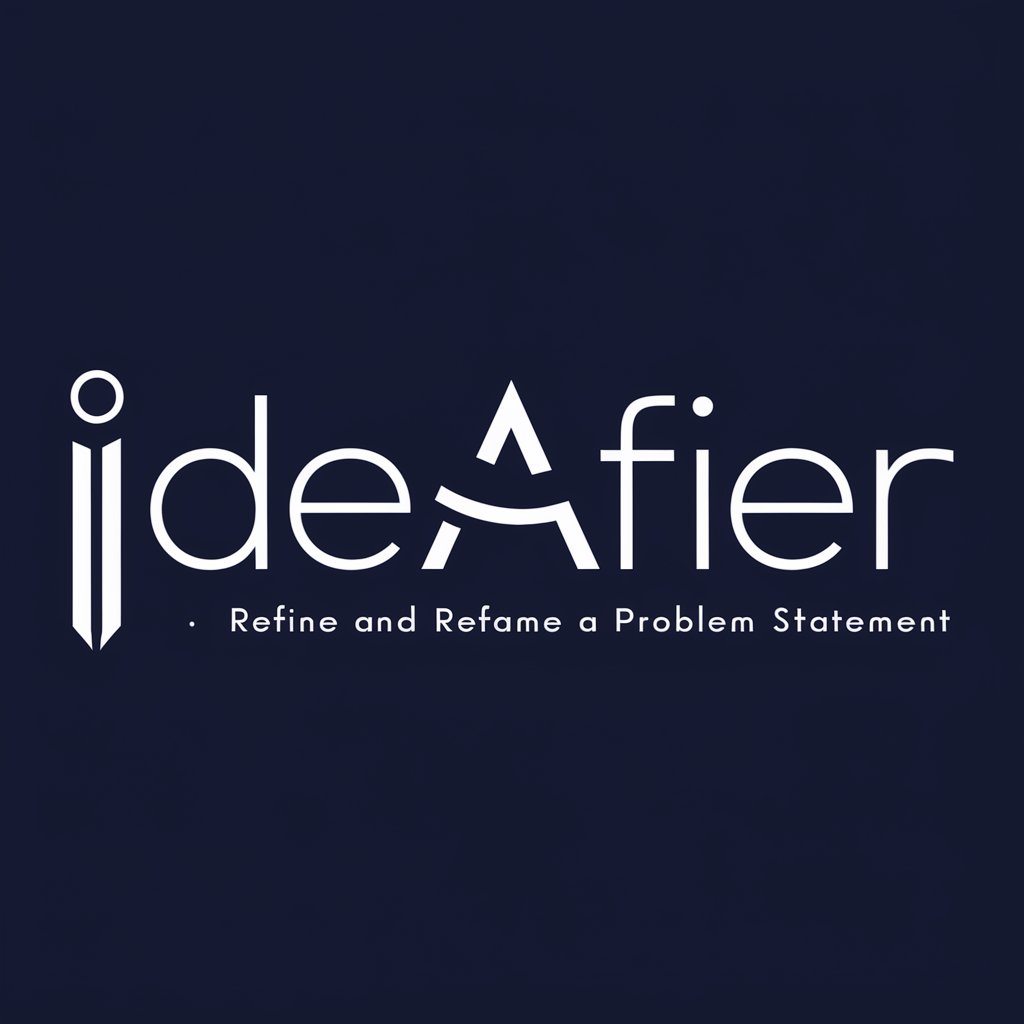
Matchmaker - Pensy AI
Find Your Perfect Match with AI

Inner AGI thought.
Philosophical Journeys in AI Thought

English Lessons GPT
AI-powered English learning made easy
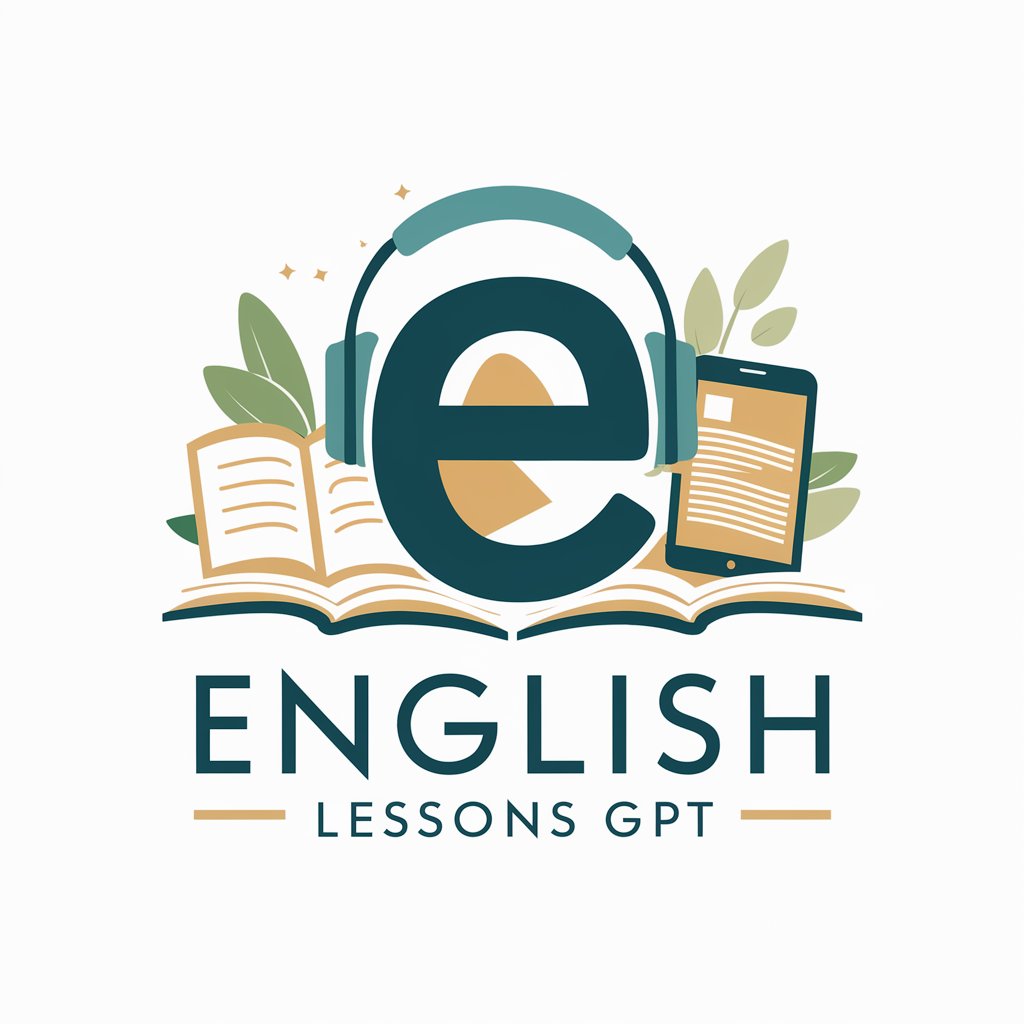
Memorization Assistant
Elevate Your Memory with AI

Civic Design AI
Empowering Urban Innovation with AI

Find Me Food
AI-Powered Personal Dining Concierge

Indian AI Lawyer
Empowering legal decisions with AI

Talk About God & the Bible
AI-powered Biblical Insight

Smm manager
Empower Your Instagram with AI Insights

Property Insights
Empower Your Property Decisions with AI

Editor Prose
Transforming Stories with AI

Frequently Asked Questions about High School Helper
What subjects does High School Helper cover?
High School Helper offers comprehensive assistance across all major subjects taught in 9th to 12th grade, including Mathematics, Science, English, History, and more, aligning with the U.S. high school curriculum.
Can High School Helper assist with exam preparation?
Yes, it can provide study materials, practice questions, and strategies tailored to various exams at the high school level, helping students prepare effectively.
How does High School Helper personalize learning?
It personalizes learning by adapting responses based on the user's specific questions and academic needs, allowing for a more tailored educational support experience.
Is High School Helper accessible to all students?
Yes, it's designed to be accessible to all high school students, offering a free trial without login requirements, ensuring easy access to educational assistance.
Can High School Helper help with homework?
Absolutely, it provides detailed explanations, step-by-step problem solving, and tips to assist students with their homework across a wide range of subjects.
